The Early Tudors
Reigning English Monarch
Henry VIII - 1509 to 1547
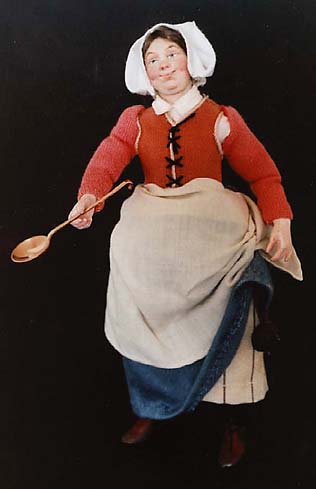
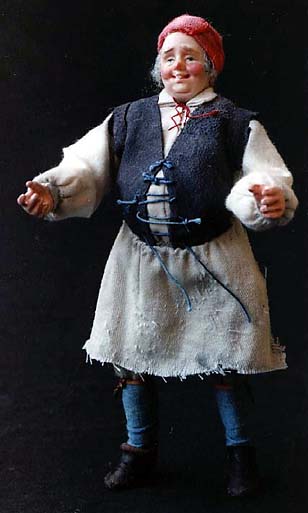
The Male and Female servants above were based on a painting from 1566 by Pieter Bruegel the Elder. Peasant and servants dress had remained very much the same since the Mediaeval period and remained so for decades. The wool trade established in the 12th & 13th Centuries had made England the chief source of wool supply, exporting to the whole of Europe. The tax on the wool was a lucrative income for any English monarch which by ‘Custom’ they were allowed by Parliament to keep for life.
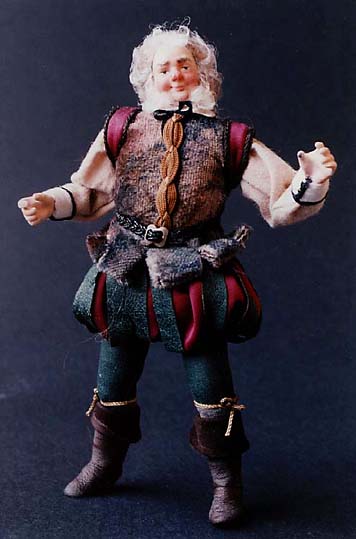
The dress of the growing numbers of wealthy in this period was characterised by rich materials and furs, extreme styles and profuse ornamentation. The boozy old night above is based on Sir John Falstaff, a popular fictional Character by William Shakespeare 1564 to 1616. Falstaff plays a role in three of Shakespear's plays here he is (below) in a scene outside The Boar's Head Tavern, from Henry IV part 1.
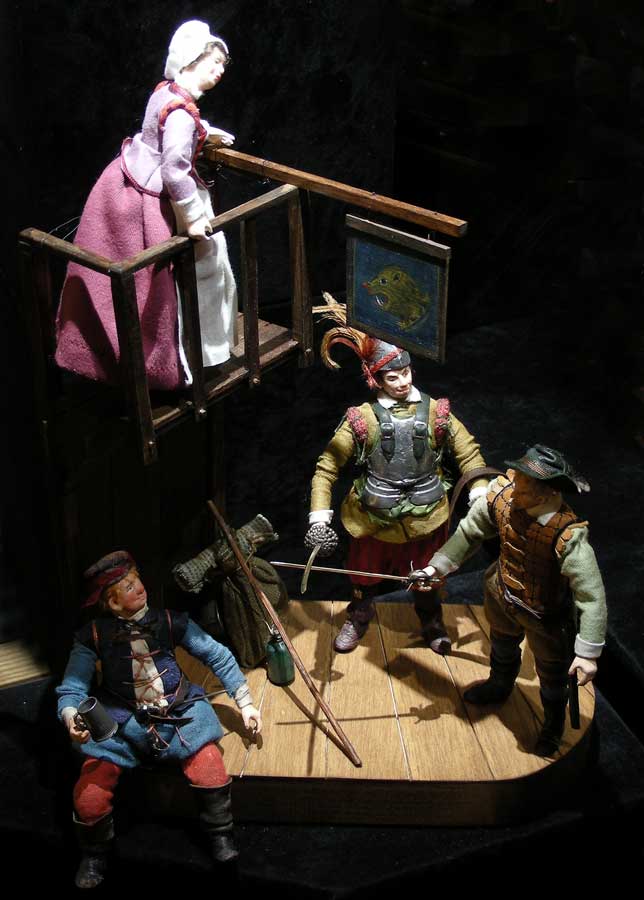
The Late Tudors
Reigning English Monarch
Elizabeth 1 - 1558 to 1603
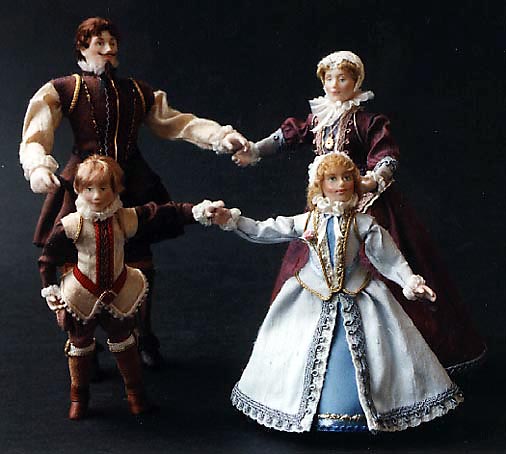
The merchant family c.1570's above exhibit typical dress of the new middle classes. Expensive lace ruffs have become fashionable for both men and women.
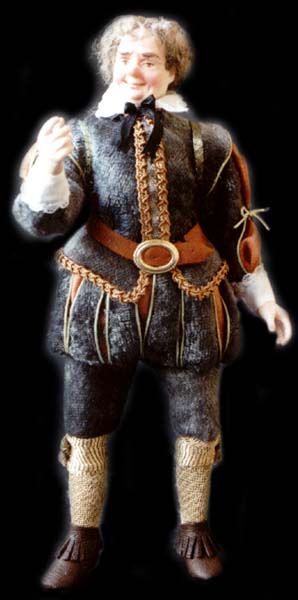
Men like the merchant above still wore the doublet and hose from the waist down, but the jacket was now much shorter and less bulky.
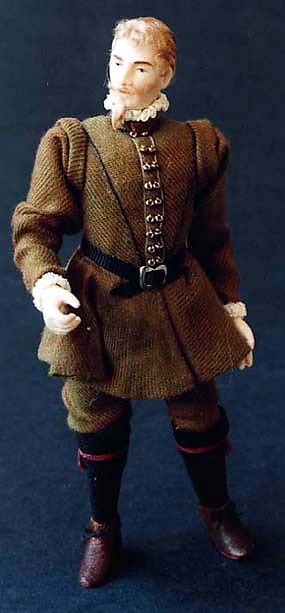
The professional gentleman above was made to represent a country herbalist. The professions included skilled workers such as stone masons and carpenters who were highly valued individuals, affording well made garments indicating a higher rank in society.
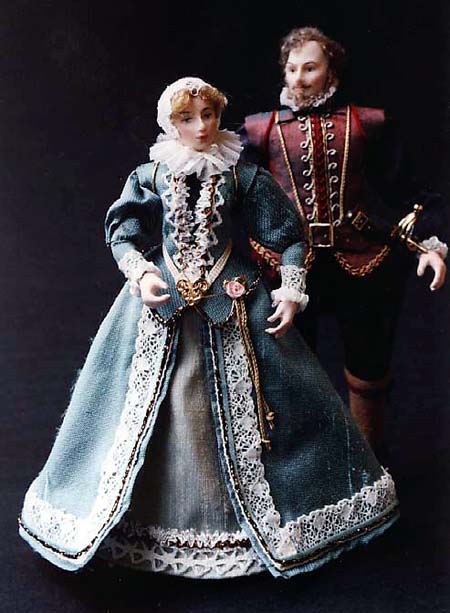
The wool trade still flourished in Late Tudor times, bringing great riches to the wool merchants as shown above and anyone connected with that lucrative trade. It was also a time of great class distinction. A law was passed forbidding anyone below the class of merchant to wear silk. Thereby underlining both the upper classes and securing a massive use of wool by the vast majority of the population.
Land owning farmers (as below) were often employed cooks and servants in the farmhouse along with workers in the fields. (Below again) we see a cook followed by a young kitchen drab, then the Farmers wife setting off for the market.
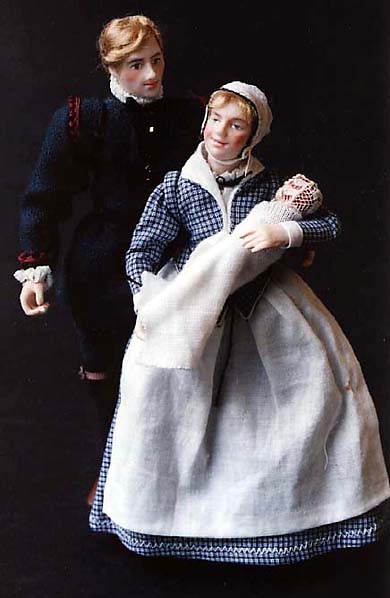
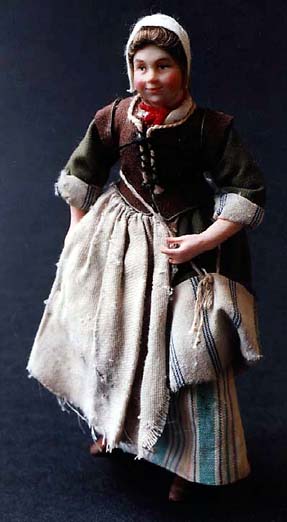
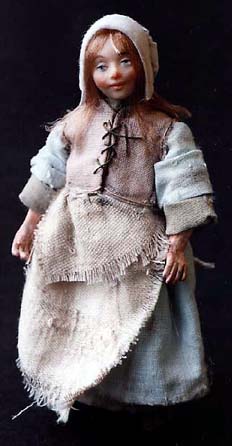
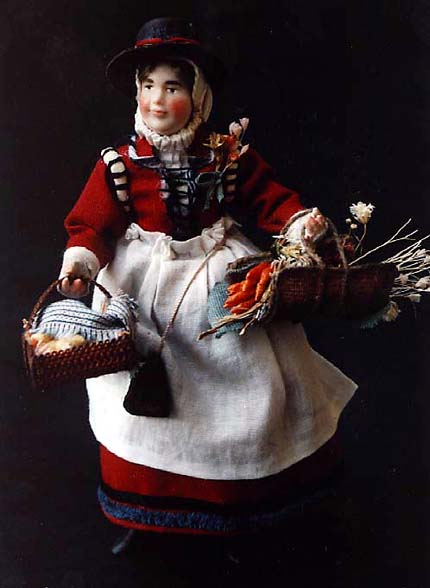
Attractions of the Tudor Town
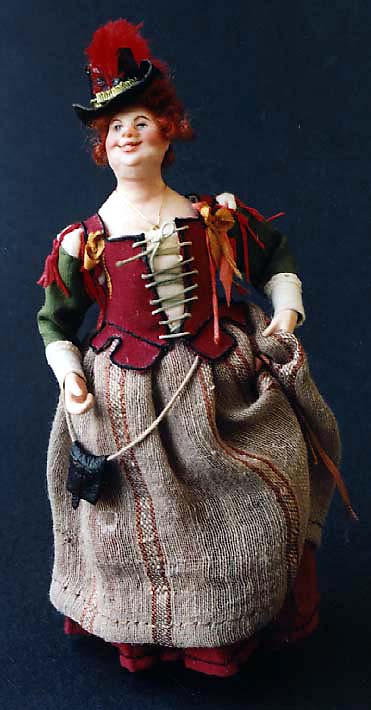
Above is a "Lady of the Town". She is wearing green sleeves. Ladies of the night wore these as a badge of their profession - hence the song Henry VIII may have written - Greensleves.
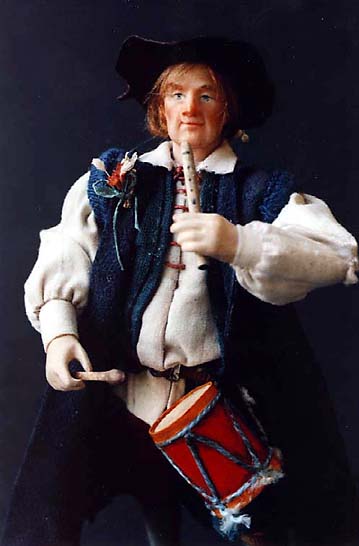
Playing his pipe in one hand, leaving the other hand free to beat the drum, the pipe and drum man is the original one man band.
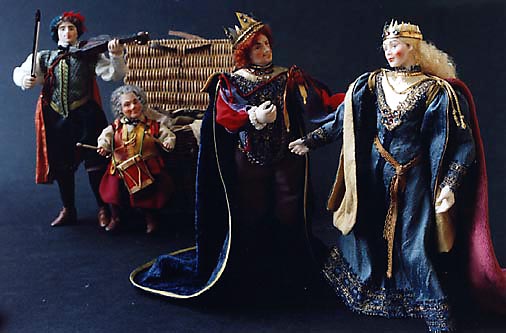
The actors above are the King and Queen, with their two musicians they are performing the play 'HAMLET PRINCE OF DENMARK'. The Queen is a young man, as women were not allowed on the stage at that time.
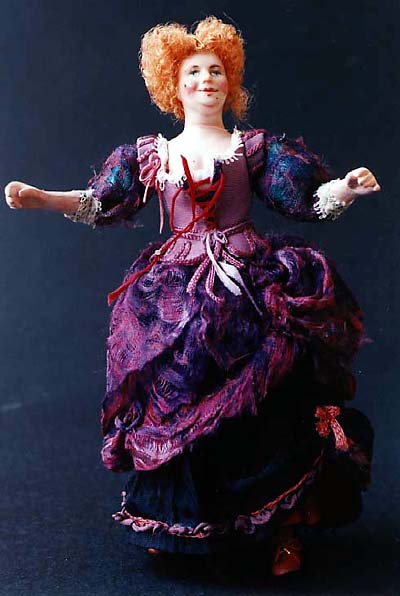
This actor (above) is in the role of a female innkeeper. He is wearing dress from the turn of the 16th into the 17th Century, the elaborate ruff may be gone but the skirt is still worn over a farthingale (hooped circular frame).
Dolls by: Jill Bennett (1934 - 2019)